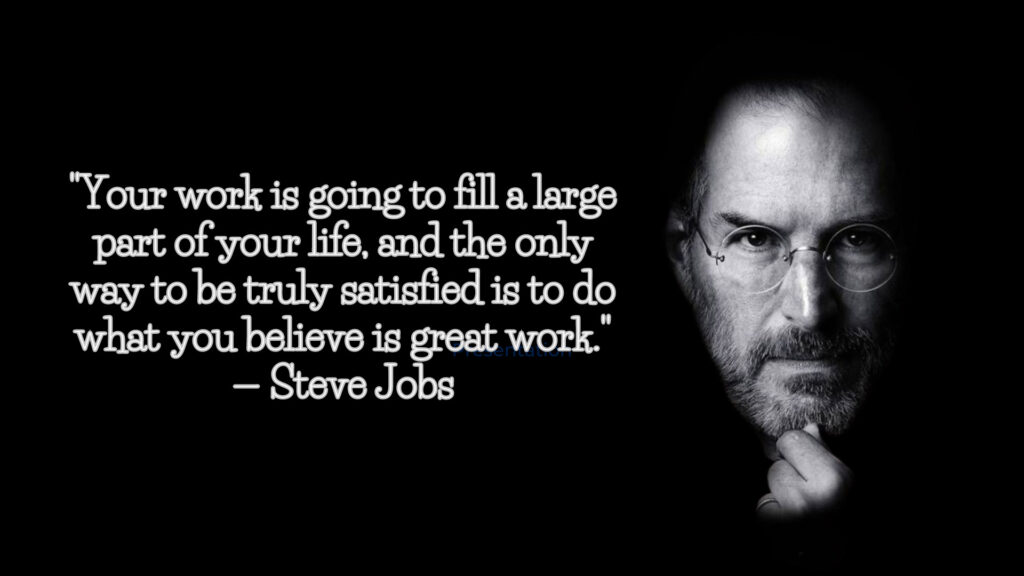When most people think of Steve Jobs, they think of the iPhone, the Mac, Pixar movies, and Apple’s sleek design. But behind all that innovation was a way of thinking about goals that went far beyond checklists and productivity hacks.
Jobs didn’t just chase achievements—he pursued what really mattered to him. Along the way, he left behind some powerful lessons on how to approach goals with clarity, passion, and purpose.
Here are six principles from Steve Jobs that can reshape the way we set our own goals.
1. Start With Passion
Jobs once said:
“You have to have a lot of passion for what you’re doing, because it’s so hard… If you don’t, any rational person would give up.”
The truth is, hard goals will test you. If you’re not deeply interested, it’s easy to walk away when things get tough. That’s why Jobs believed passion wasn’t optional—it was the fuel that carried him through the countless setbacks of building Apple and Pixar.
Choose goals that light you up, not ones you think you should chase.
2. Ruthless Focus
Jobs was famous for cutting distractions. When he came back to Apple in 1997, he slashed dozens of projects down to just four product lines. That laser focus saved the company.
As he put it:
“Focus is about saying no to the hundred other good ideas.”
Great goals aren’t about doing more—they’re about cutting out what doesn’t matter and going all in on what does.
3. Trust the Dots
In his 2005 Stanford commencement speech, Jobs said:
“You can’t connect the dots looking forward; you can only connect them looking backwards.”
He told the story of dropping into a calligraphy class in college, which seemed pointless at the time. Years later, it shaped the beautiful typography of the Macintosh.
Don’t worry if every step of your journey makes sense right now. Sometimes your strangest detours become your most valuable experiences.
4. Demand Excellence
Jobs had famously high standards:
“Be a yardstick of quality. Some people aren’t used to an environment where excellence is expected.”
This wasn’t about perfectionism—it was about refusing to settle. Whether it was the inside of a circuit board or the design of a box, Jobs believed that quality matters everywhere.
Don’t set goals just to finish them. Set them to raise the bar.
5. Let Mortality Guide You
Jobs often reflected on death and how it shaped his decisions:
“Remembering that I’ll be dead soon is the most important tool I’ve ever encountered to help me make the big choices in life.”
Thinking about mortality stripped away his fears and helped him focus on what was truly important.
When you’re unsure about a goal, ask yourself: If this were my last year, would I still want to do this?
6. Aim for Impact, Not Just Wealth
Jobs made it clear that money wasn’t his north star:
“Being the richest man in the cemetery doesn’t matter to me. Going to bed at night saying we’ve done something wonderful—that’s what matters to me.”
The best goals aren’t about status or money. They’re about doing something that leaves a mark.
If we pull these lessons into a framework, Steve Jobs’ approach to goals looks something like this:
- Passion First – Go after what excites you.
- Radical Focus – Say no to distractions.
- Trust the Dots – Let your path unfold.
- Excellence Always – Aim for quality.
- Mortality Check – Keep perspective.
- Impact Over Wealth – Strive to matter.
Jobs didn’t think about goals as a productivity system—he thought about them as a way of living. If we use even a fraction of this mindset, our goals can become more than tasks to complete. They can become a way to build something meaningful.
This article was written by Harry Che, founder and creator of GoalsOnTrack, a goal-setting and goal-tracking software designed to help people turn their personal and professional goals into reality.
